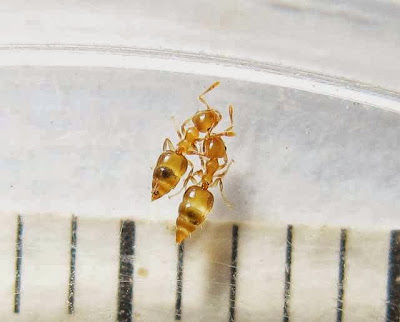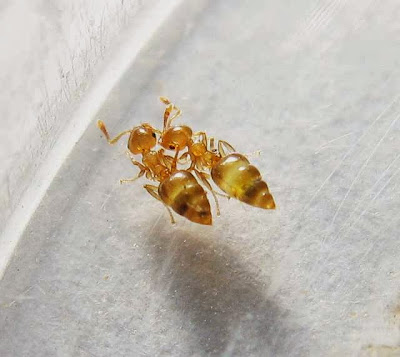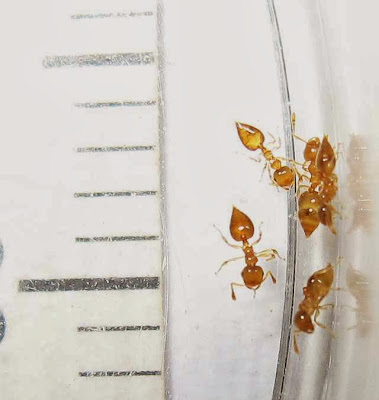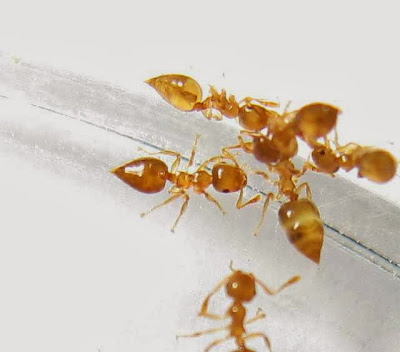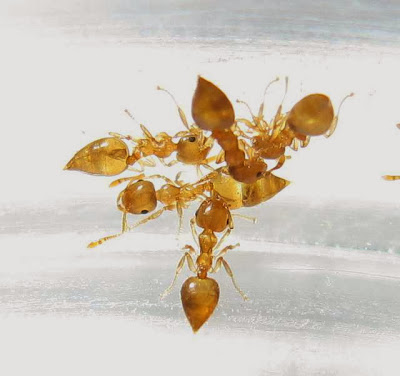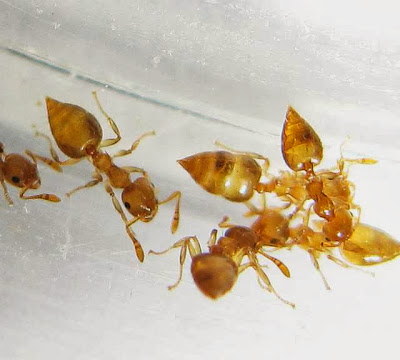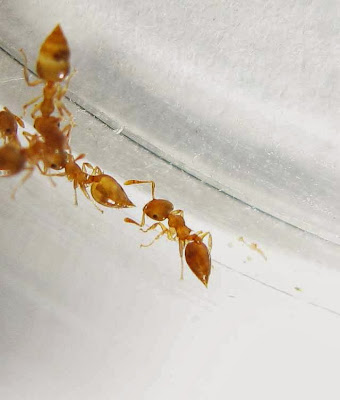Crematogaster or acrobat ants are mostly small (of less than 3 millimeters which constitute the majority of the species of this location) to average size ants (3 to 7 millimeters) ants. Similar to Oecophyla, Crematogaster turns its gaster upward and forward to eject it formic acid at a prey or an enemy. Nearly all Crematogaster are arboreal ants spending the bulk of their foraging on plants and trees. Most species also have their nest in trees though the nests are started underground by the founding gyne. The larger size species are more aggressive and protective of their turf and not just their honeydew supply.
This species is monomorphic. This species is around 2 millimeters (without the bloated gaster).
Workers of a small Crematogaster ant.
Workers of a small Crematogaster ant.
Workers of a small Crematogaster ant.
Workers of a small Crematogaster ant.
Workers of a small Crematogaster ant.
Workers of a small Crematogaster ant.
Workers of a small Crematogaster ant.
Workers of a small Crematogaster ant.
Workers of a small Crematogaster ant.
Workers of a small Crematogaster ant.
Workers of a small Crematogaster ant.
Workers of a small Crematogaster ant.
Workers of a small Crematogaster ant.
Workers of a small Crematogaster ant.
Workers of a small Crematogaster ant.
Workers of a small Crematogaster ant.
Workers of a small Crematogaster ant.
Workers of a small Crematogaster ant.
Workers of a small Crematogaster ant.
See Also:
Crematogaster genus 200574.
Taxonomy
(no rank) Root 1
(Top Node) Cellular organism 131567Superkingdom: Eukaryota 2759 [Domain]
(no rank) Opisthokonta 33154
Kingdom: Metazoa 33208
(no rank) Eumetazoa 6072
(no rank) Bilateria 33213
(no rank) Coelomata 33316
(no rank) Protosomia 33317
(no rank) Panarthropoda 88770
Phylum: Arthropoda 6656
(no rank) Mandibulata 197563
(no rank) Pancrustacea 197562
Superclass: Hexapoda 6960
Class: Insecta 50557
(no rank) Dicondylia 85512
(no rank) Pterygota 7496
Subclass: Neoptera 33340
Infraclass: Endopterygota 33392
Order: Hymenoptera 7399
(no rank) Apocrita 7400
Suborder: Aculeata 7434
Superfamily: Vespoidea 34725
Family: Formicidae 36668
Subfamily: Myrmicinae 34695
Tribe: Crematogastrini 144004Genus: Crematogaster 29040
Subgenus: Crematogaster 200574
Last Updated: 2014 06 26
First Posted: 2014 06 26
© 2009 - 2014 Quah. All rights reserved.
First Posted: 2014 06 26
© 2009 - 2014 Quah. All rights reserved.
